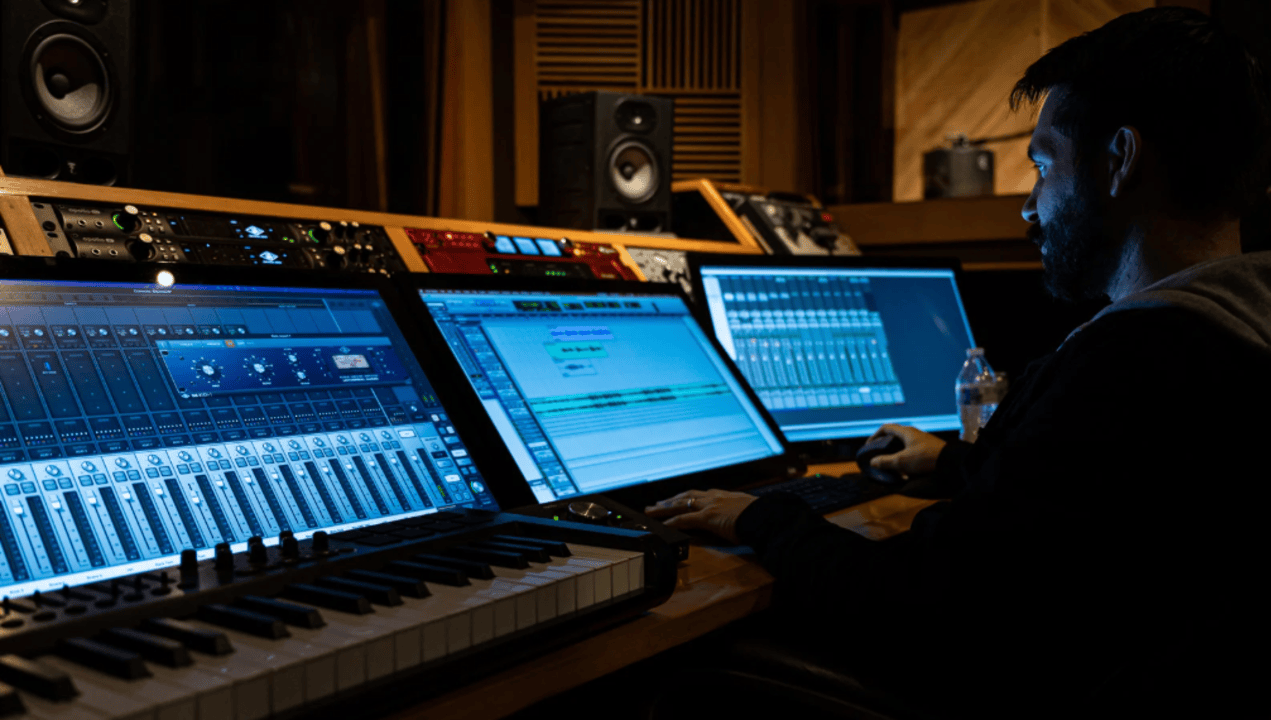How Startups Are Using Text-Based 3D Modeling to Cut Costs and Boost Creativity
Nov 15, 2025 | By Team SR

A New Era of 3D Modeling Is Emerging
It’s no secret that startups often operate on shoestring budgets. At the same time, they’re expected to deliver high-impact products and visuals that capture attention quickly. For those developing anything from gaming experiences to architectural concepts, traditional 3D modeling can be time-consuming and expensive.
That’s where text-based 3D modeling steps in. By allowing users to generate 3D models with simple text prompts, this innovation is quickly becoming a game-changer for startups needing rapid prototyping without the high costs.
1. Lowering Barriers to Entry
Traditionally, 3D modeling demanded specialized software, powerful computers, and experienced professionals. For early-stage teams, this meant either stretching their budget to hire freelancers or living with less-than-ideal visuals.
Text-based tools dramatically lower that barrier. You don’t need to be a 3D artist to describe what you want; a well-crafted text prompt can now generate complex 3D objects. This enables founders, product managers, or even marketers to jump into model creation, no technical experience required.
It also democratizes access. Early teams can experiment, revise, and test visual concepts in real-time saving weeks of back-and-forth with external designers.
2. Cutting Development Time and Costs
Time is money, especially during a startup’s formative stages. Traditional 3D modeling workflows involve long hours of manual work, editing, revising, and rendering. For startups, that means delayed product iterations and increased labor costs.
Using generative AI, startups can reduce those timelines significantly. These advancements are part of a broader trend where generative AI tools are helping businesses of all sizes accelerate creative and operational workflows. Models can be generated in minutes, allowing teams to focus on refining the product rather than building from scratch.
Plus, by reducing the reliance on outsourcing or hiring specialists, startups can redirect funds into other critical areas like marketing or user research, thereby significantly reducing overall expenses.
3. Empowering Creative Experimentation
Startups thrive on creativity and unique ideas. But when resources are limited, it’s easy to play things safe. Text-based 3D modeling removes those constraints by making the creative process faster, more accessible, and low-risk.
Want to see how a concept would look in five different styles? Run five prompts instead of paying for five custom models. It encourages more iterations, bolder experiments, and rapid pivots. This creative freedom is akin to the capabilities offered by various AI image generators, which allow rapid visualization of concepts from simple text prompts, further democratizing design. You can test unconventional ideas on a whim without financial hesitation.
Because each iteration costs virtually nothing to generate, teams can explore far more concepts without the usual design expenses piling up.
Additionally, it invites non-designers into the creative fold. Cross-functional teams - like developers or operations - can now partake in ideating visuals, leading to more diverse and innovative outcomes.
4. Perfect for Pitch Decks and MVPs
A startup's first impression matters. Whether it's an investor presentation or an MVP showcase, having polished 3D visuals can shift perception in your favor.
Now, you don’t need to compromise due to time or budget constraints. Text-based modeling allows startups to instantly boost the visual quality of their materials.
This reduces the need to hire external designers for polished mockups, giving early teams a way to elevate their visuals while keeping presentation costs minimal.
If you’re building an app or a product that involves virtual spaces, objects, or environments, incorporating custom 3D visuals becomes a compelling way to stand out. For startups focused on immersive experiences, this also aligns with the rapid growth seen in the startup leveraging AR/VR technology sector, where innovative 3D assets are crucial. It shows effort, polish, and potential, qualities that investors and customers are drawn to.
5. Supporting Remote and Agile Workflows
Many startups today operate as distributed teams. Sharing heavy 3D files, coordinating changes across time zones, and maintaining version control can be a logistical hurdle.
By simplifying how teams share and revise ideas, startups also avoid the software licensing fees and heavy file storage costs that often come with traditional 3D workflows.
Text-based modeling tools live in the cloud, support real-time collaboration, and reduce file complexity. Instead of relying on huge model files, teams can simply pass around prompts, tweak descriptions, and regenerate as needed.
This supports a more agile and collaborative design process that fits modern startup workflows. And when speed matters, being able to brainstorm ideas in chat and instantly see them take shape isn’t just helpful - it’s groundbreaking.
What to Keep in Mind Going Forward
While the benefits are clear, it’s worth remembering that text-based 3D modeling is still evolving. The fidelity of the output can vary, and highly specialized or ultra-polished assets may still require manual refinement.
Also, not every tool is created equal. Some platforms are better suited for stylized visuals; others focus on realistic renders. So it’s worth exploring tools and testing them before choosing one for an important project.
Choosing the right platform also helps avoid hidden expenses, since picking a tool that doesn’t match your needs can lead to wasted time, rework, or unexpected upgrade costs.
For more insights on streamlining creative work in your team, check out how to build a lean startup team or the best tools for remote collaboration - both useful reads for founders navigating early-stage scaling.
Embracing the Future of Startup Creativity
Text-based 3D modeling isn’t just another tool in the box - it’s shifting how startups create, test, and present ideas. By lowering costs, inviting experimentation, and accelerating workflows, it’s turning limitations into advantages.
As the technology matures, expect it to become a go-to resource not just for prototyping but for marketing, product development, and even customer engagement.
For early-stage teams trying to stretch every dollar, the ability to generate high-quality assets at a fraction of traditional production costs can make an immediate impact.


 Follow us
Follow us Follow us
Follow us














